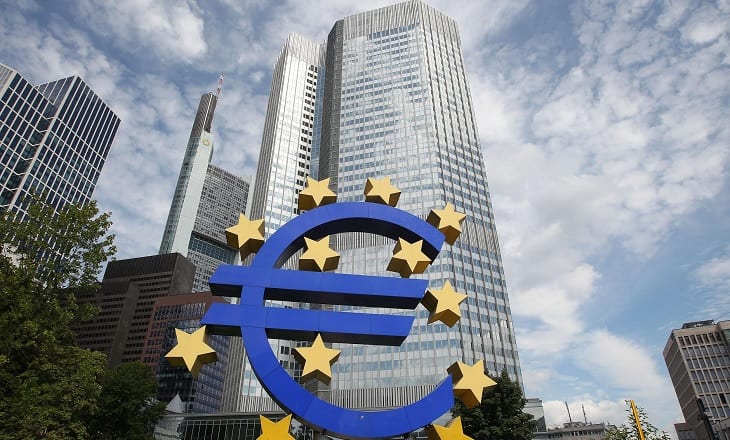The following article was written by Ipek Ozkardeskaya, Senior Market Analyst at FCA regulated broker London Capital Group Holdings plc (LON:LCG).

Ipek Ozkardeskaya, LCG
The euro is fueled by speculations that the European Central Bank (ECB) will soon announce a plan for the future of its Quantitative Easing (QE) program, which is due to end in September this year.
The ECB President Mario Draghi’s latest speech in Portugal revived the hawkish expectations in the course of the last week of June.
The ECB’s June policy meeting accounts enhanced the sell-off in the Eurozone sovereign bonds.
The euro rallied to 14-month highs against the greenback. The Eurozone yield curve steepened.
ECB minutes spurred EZ yield rally
The ECB minutes showed that the European policymakers discussed about the possibility of the QE unwind at the latest meeting. ECB’s Coeur said that the ‘Euro Area recovery has finally arrived’. The satisfactory fundamentals suggest that the bank will soon be tempted to start normalizing its ultra-loose monetary policy.
However, the policymakers maintained an emphasis on inflation ‘as the economic expansion had yet to translate into stronger inflation dynamics’.
September is not a line in the sand
In fact, the ECB’s silence regarding the future of its QE program has been a decent disappointment over the last two monetary policy announcements. The absence of guidance also gave speculators a free hand to bet on numerous, unfunded scenarios.
Nowadays, the ECB hawks’ early assumptions finally begin to take shape.
In theory, the ECB could be expected to hold its promise and stop buying assets in September.
Of course, the reality of the central bank world is different. We can easily guess that September is not a line in the sand and there should be more in ECB’s mind regarding the future of its QE program. At least, nobody expects the ECB to abruptly stop purchasing assets in September and let the markets without assistance thereafter.
ECB may be running out of eligible bonds
Besides private bonds, the ECB purchases 60 billion euros worth of sovereign debt on monthly basis to support the liquidity in the market and to foster growth. The ratio of its sovereign bond purchases is defined by the capital key ratio, with a flexibility margin.
This amount was pulled down from 80 billion dollars in March. Mario Draghi had cleverly and successfully convinced the market that the decline in monthly purchases was not a ‘tapering’. Hence, he had avoided an unwelcomed and aggressive spike in the Eurozone yields. Yet, the suspicion regarding the quantity of eligible bonds remained a frequently questioned matter.
Released recently, the ECB’s official data showed the deviations in purchases by country. The ECB has been missing its target in Finnish, Irish and Portuguese debt since several months. This is due to the lack bond issuance and is not perceived as a major problem per se.
Yet the German debt purchases, which have exceed the capital ratio in the beginning of 2017, has fallen short over the last three months and revived the worries about the availability of these bonds for future purchases.
On a side note, purchases of French and Italian bonds increased gradually to compensate the gap.
As a result, the ECB is certainly running out of eligible bonds and needs to reduce the size of the QE to stick to its policy.
To do so, the bank is now giving a solid justification, the economic recovery.
Yet, the inflation is still a headache.
Low inflation
Now, let’s put the Eurozone in the right macroeconomic context in terms of the ECB’s policy mandate, the inflation. The ECB is given a mandate to bring the Eurozone’s inflation to the 2% target.
It is more interesting to monitor the core inflation, which excludes the most volatile components such as food and energy and note that the energy and commodity prices continue having an indirect impact on consumer prices even after being filtered out.
According to early estimates, the Eurozone’s core inflation advanced to 1.1% year-on-year in June. There has been a significant improvement to 2017 dip of 0.7%y/y printed in March.
Yet according to Draghi, the inflation remains ‘more muted than one would expect’ and the low inflation is due to external factors such as the collapse in global oil and commodity prices, the output gap, and the global slack.
Low inflation suggests that the ECB cannot fully take its hands off the table.
Consequently, the ECB is expected to navigate through a period of improved recovery, yet low inflation.
Smaller size, flexible duration could be the answer
In the absence of clear guidance and in the light of the advancement of the QE program over the course of its life, we could conclude that a reasonable expectation would be a readjustment in the size of the QE program, without a specification regarding its duration.
At this point in time, the latter solution would satisfy both the hawks and the doves and avoid an eventual panic in the euro market.
In this context, the recovery in the euro should be bolstered by idiosyncratic dynamics. According to the latest Bloomberg survey, the EURUSD should end the year within the 1.0889 – 1.2072 range with 73.3% probability. A hawkish shift in the ECB’s policy could tip the scales in the favour of the top range.
